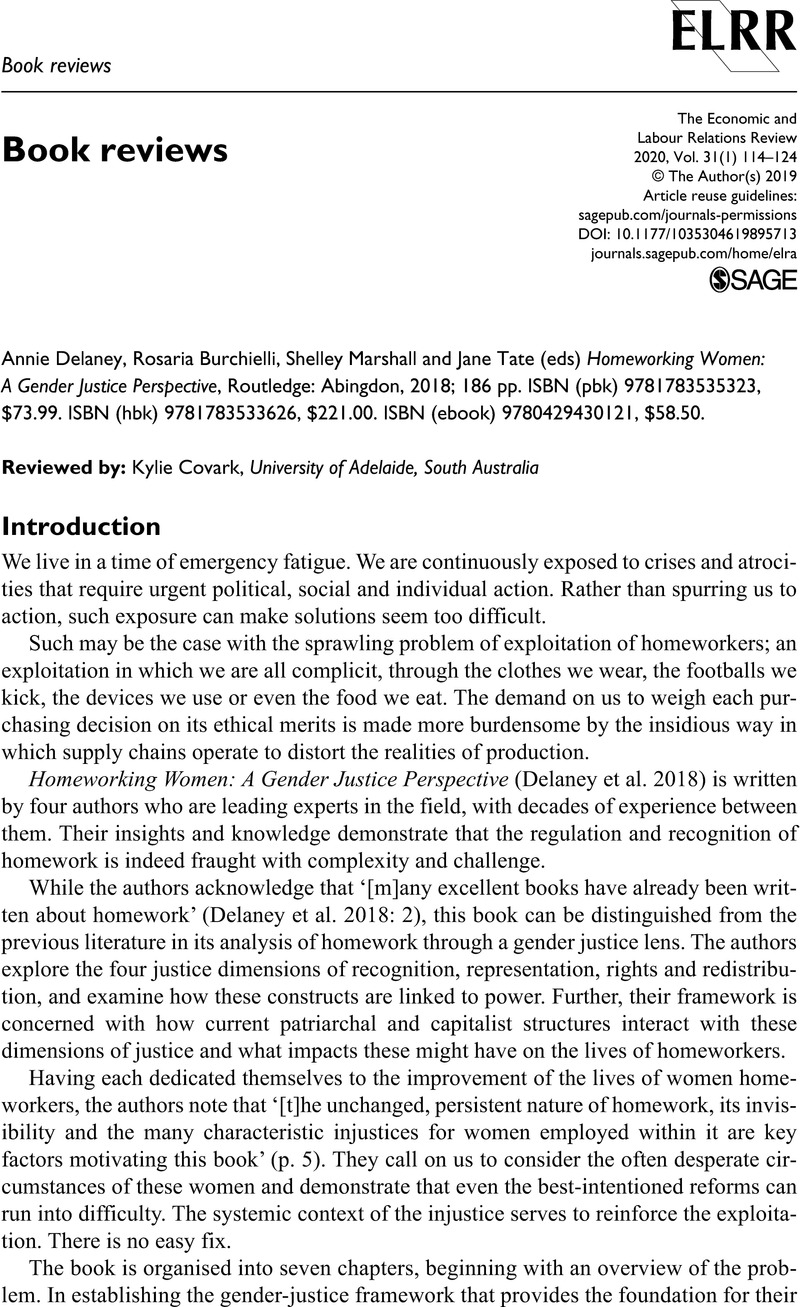No CrossRef data available.
Article contents
Annie DelaneyRosaria BurchielliShelley MarshallJane Tate(eds) Homeworking Women: A Gender Justice Perspective, Routledge: Abingdon, 2018; 186 pp. ISBN (pbk) 9781783535323, $73.99. ISBN (hbk) 9781783533626, $221.00. ISBN (ebook) 9780429430121, $58.50.
Review products
Annie Delaney Rosaria Burchielli Shelley Marshall Jane Tate (eds) Homeworking Women: A Gender Justice Perspective, Routledge: Abingdon, 2018; 186 pp. ISBN (pbk) 9781783535323, $73.99. ISBN (hbk) 9781783533626, $221.00. ISBN (ebook) 9780429430121, $58.50.
Published online by Cambridge University Press: 01 January 2023
Abstract
An abstract is not available for this content so a preview has been provided. Please use the Get access link above for information on how to access this content.

- Type
- Book reviews
- Information
- The Economic and Labour Relations Review , Volume 31 , Issue 1: Affordable housing; Migrant labour; New precarity questions , March 2020 , pp. 114 - 116
- Copyright
- Copyright © The Author(s) 2020


